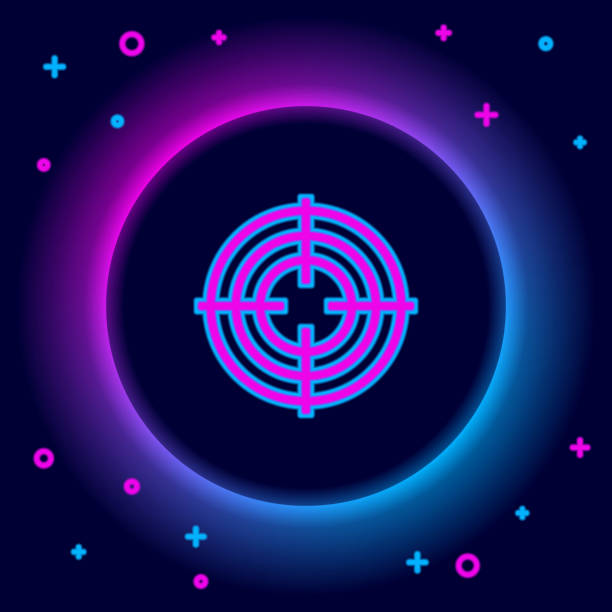Light gun games have been a staple of arcade gaming for decades, offering players an immersive and interactive shooting experience. With the rise of home consoles, particularly the PlayStation, these games found a new audience, bringing the thrill of arcade-style shooting right into living rooms. In this article, we’ll explore the history, evolution, and enduring appeal of PlayStation light gun games, and why they remain a beloved genre for gamers of all ages.
What Are Light Gun Games?
Light gun games are a subgenre of shooter games where players use a specialized peripheral—a light gun—to aim and shoot at targets on the screen. These games rely on the gun’s ability to detect where it’s pointing on the display, creating a highly interactive and engaging experience. From arcade classics like Time Crisis and House of the Dead to home console adaptations, light gun games have always been about precision, quick reflexes, and fast-paced action.
The Rise of PlayStation Light Gun Games
When Sony launched the original PlayStation in 1994, it revolutionized the gaming industry with its cutting-edge graphics and expansive library of games. Among these were light gun games, which quickly gained popularity for their ability to replicate the arcade experience at home. Titles like Point Blank and Time Crisis became instant classics, offering hours of fun for solo players and groups alike.
The PlayStation’s success with light gun games was largely due to its compatibility with the GunCon, a light gun peripheral developed by Namco. The GunCon was designed to work seamlessly with CRT televisions, using their scan lines to accurately detect where the gun was aimed. This technology allowed players to enjoy precise and responsive gameplay, making it a must-have accessory for fans of the genre.
Iconic PlayStation Light Gun Games
Several light gun games have left an indelible mark on PlayStation history. Here are some of the most iconic titles:
- Time Crisis (1997)
A pioneer in the genre, Time Crisis introduced a unique cover mechanic where players could hide from enemy fire by releasing the pedal on the GunCon. This added a layer of strategy to the fast-paced shooting action, making it a standout title for the PlayStation. - Point Blank (1998)
Known for its quirky mini-games and colorful visuals, Point Blank was a party favorite. It offered a mix of shooting challenges, from popping balloons to defeating quirky enemies, making it accessible and fun for players of all skill levels. - House of the Dead (1998)
While primarily an arcade game, House of the Dead found its way to the PlayStation, bringing its zombie-shooting action to home consoles. Its horror-themed gameplay and cooperative mode made it a hit among fans of the genre. - Elemental Gearbolt (1997)
This lesser-known gem combined light gun gameplay with RPG elements, offering a unique and story-driven experience. Its anime-style visuals and engaging narrative set it apart from other shooters of the time.
The Decline and Legacy of Light Gun Games
As gaming technology advanced, the popularity of light gun games began to wane. The shift from CRT to LCD and plasma TVs rendered traditional light guns obsolete, as the new display technology couldn’t support the same targeting systems. Additionally, the rise of first-person shooters (FPS) and motion-controlled gaming (thanks to consoles like the Wii) offered new ways to experience shooting games, further overshadowing the light gun genre.
Despite this decline, the legacy of PlayStation light gun games lives on. Many of these titles have been re-released on modern platforms, and their influence can be seen in contemporary VR shooters, which aim to recreate the same level of immersion and interactivity.
Why PlayStation Light Gun Games Still Matter
For many gamers, PlayStation light gun games represent a nostalgic trip back to the golden age of gaming. They remind us of simpler times when gaming was about quick reflexes, high scores, and shared experiences with friends and family. Even today, these games hold up as timeless classics, offering a level of engagement that few modern shooters can match.
Moreover, the resurgence of retro gaming has sparked renewed interest in light gun games. With the advent of adapters and emulators, players can once again enjoy these classics on modern displays, ensuring that the genre’s legacy continues to thrive.
The Technology Behind Light Gun Games
To truly appreciate the magic of PlayStation light gun games, it’s essential to understand the technology that made them possible. Light guns work by detecting the light emitted by CRT (cathode ray tube) televisions. When the trigger is pulled, the screen flashes a white block around the target, and the gun senses this flash to determine where the player is aiming. This technology was groundbreaking at the time, offering a level of precision and interactivity that was previously only available in arcades.
The PlayStation’s GunCon, developed by Namco, was a marvel of engineering. It featured a comfortable design, a built-in pedal for cover mechanics (in games like Time Crisis), and compatibility with a wide range of light gun titles. The GunCon’s accuracy and responsiveness made it a favorite among gamers, and it remains a sought-after collector’s item today.
The Social Aspect of Light Gun Games
One of the most significant appeals of PlayStation light gun games was their social aspect. Unlike many single-player games, light gun titles often featured cooperative or competitive modes that encouraged players to team up or face off against each other. Games like Point Blank and Time Crisis 2 were perfect for parties, offering quick, addictive gameplay that kept everyone engaged.
The cooperative mode in House of the Dead was particularly memorable, as players worked together to fend off hordes of zombies. These shared experiences created lasting memories and fostered a sense of camaraderie among players. Even today, light gun games are a fantastic way to bring friends and family together for some old-school fun.
The Challenges of Modernizing Light Gun Games
As gaming technology evolved, so did the challenges of keeping light gun games relevant. The transition from CRT to LCD, LED, and plasma displays posed a significant hurdle, as these modern screens don’t emit the same type of light that traditional light guns rely on. This shift effectively rendered classic light gun peripherals obsolete, leaving fans of the genre searching for alternatives.
However, the gaming industry has found ways to adapt. Modern light gun games often use motion controls, such as those found in the PlayStation Move or Nintendo Wii, to replicate the experience. Additionally, virtual reality (VR) has opened up new possibilities for immersive shooting games, with titles like Superhot VR and Pistol Whip capturing the spirit of classic light gun games while pushing the genre forward.
The Future of Light Gun Games
While traditional light gun games may no longer dominate the gaming landscape, their influence can still be felt in modern titles. The rise of VR has breathed new life into the genre, offering players an even more immersive way to experience shooting games. With VR headsets and motion controllers, gamers can now physically aim, shoot, and dodge in ways that were previously impossible.
Moreover, the retro gaming movement has sparked renewed interest in classic light gun games. Emulators and adapters allow players to enjoy these titles on modern displays, ensuring that the genre’s legacy continues to thrive. Whether through VR, motion controls, or retro re-releases, the spirit of PlayStation light gun games lives on.
Tips for Playing Light Gun Games Today
If you’re eager to revisit the world of PlayStation light gun games, here are a few tips to get started:
- Find a CRT TV: To play classic light gun games as intended, you’ll need a CRT television. These older displays are essential for compatibility with traditional light guns like the GunCon.
- Invest in a GunCon: While they can be hard to find, original GunCon peripherals are worth the effort. They offer the most authentic experience for playing PlayStation light gun games.
- Explore Modern Alternatives: If you don’t have access to a CRT TV, consider trying modern light gun games on platforms like VR or motion-controlled consoles. These alternatives offer a similar level of interactivity and fun.
- Check Out Retro Collections: Many classic light gun games have been re-released in retro collections or digital stores. These versions often include updated controls and features for modern systems.
The Cultural Impact of Light Gun Games
Beyond their gameplay, PlayStation light gun games had a significant cultural impact. They bridged the gap between arcade and home gaming, bringing the excitement of the arcade to a broader audience. Titles like Time Crisis and Point Blank became household names, and their influence can be seen in everything from modern shooters to VR experiences.
Light gun games also played a role in shaping the gaming industry’s approach to peripherals. The success of the GunCon demonstrated the potential of specialized controllers, paving the way for innovations like the PlayStation Move, Wii Remote, and even VR motion controllers.
Final Thoughts
PlayStation light gun games represent a unique and unforgettable chapter in gaming history. They combined cutting-edge technology, engaging gameplay, and social interaction to create experiences that resonated with players of all ages. While the genre may have evolved over the years, its legacy endures, inspiring new generations of gamers and developers alike.
Whether you’re a longtime fan or a curious newcomer, there’s never been a better time to explore the world of PlayStation light gun games. So dust off your GunCon, gather your friends, and get ready to relive the magic of these timeless classics. The thrill of the arcade awaits!



